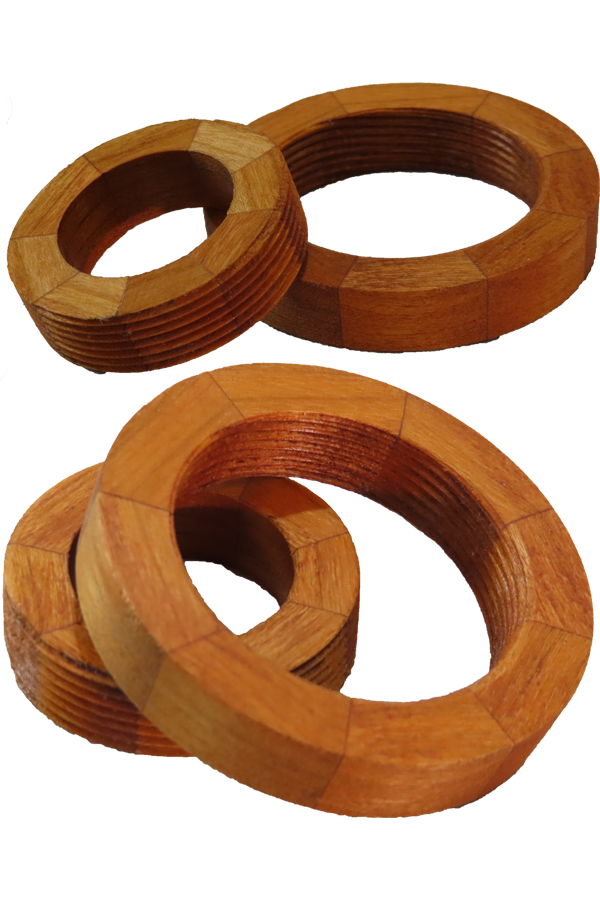Six Handicap Woodturning – Segment Ring Thread Chasing
by Alan Stratton on Friday, June 12th, 2020 | 10 Comments
This video is also available on YouTube, Vimeo, and FaceBook. Please stay right here at As Wood Turns.

After receiving comments about deficiencies in power tools preventing viewers from trying to thread segmented thread sets, I decided to handicap myself and try to repeat Frank’s success.
Handicaps:
- Table saw with no jig
An 8 segment ring requires angles at 22.5 degrees. With my saw’s miter gauge, I could only approximate 22.5 degrees. - Band saw with no jig
I generally do not use a band saw as my saw leaves a very rough cut on the surface. - Sander with no jig
Some people have jigs with precise angles for sanding perfect rings. - Gluing with no jig
I used a rub technique from a pattern maker. Simply spread glue, rub to squeeze out excess glue. Shortly the glue will seize. - Hand chasing threads lacking muscle memory aka I don’t have Frank’s threading experience.
- No RPM meter on my lathe. A meter does not measure how fast the surface of the wood is moving.
I made this thread set from cherry.
I need more practice to come close to Frank’s level from last week’s video
Enjoy!
Loved your video.
It is easy to sit back and criticize someone else’s technique or video. I liked both. If you want to do something, just try it and then develop your own techniques. There is no wrong way to do something, just better ways to do it.
Absolutely, there are many alternatives.
Alan
I have never see the threading tools before. I am fairly new at wood turning.
What is the name of the tool and where can you get them.
Thank you
Bob V.
The tools are thread chasing tools available from several suppliers but mainly those with a significant woodturning catalog.
Alan
Alan, you wrote: “Gluing with no jig
I used a rub technique from a pattern maker. Simply spread glue, rub to squeeze out excess glue. Shortly the glue will seize.”
I have always clamped glued-up ring segments, but with considerable aggravation and difficulty. However, it would be great to dispense with the clamping process. Are you an advocate for the rub with no clamp procedure? Equally good results?
I typically use a lot of glue. but most of it winds up all over the place with very little in the joint.
I’m not sure I can give a definitive answer but here are some considerations:
1: these are end grain joints which are inherently weak. I really hate it when I drop a segment ring and it breaks. but then i
2: Most of the glue is squeezed out of the joint by clamping pressure.
3. The strength of a segmented piece primarily comes from the side grain gluing of ring to ring and bridging over the end grain joint.
4. Even with a wedgie sled, there are many sources of variation in the segments. For me, the answer is to accept variation but eliminate it with the half ring technique.
My bottom line. I will continue to experiment the the rub technique for segment to segment gluing. But, as usual, many options are available.
Alan
Thank you! This was an excellent video and cleared up some questions I had. No excuses just threads.
Thanks Alan. These two videos have been the most precious learning video I have seen this year.
Thank you David
Alan
were can you buy the threading tool. Thanks
Most places that sell gouges and tools for woodturning sell the chasing tools.
I am not recommending anyone in particular.
Alan